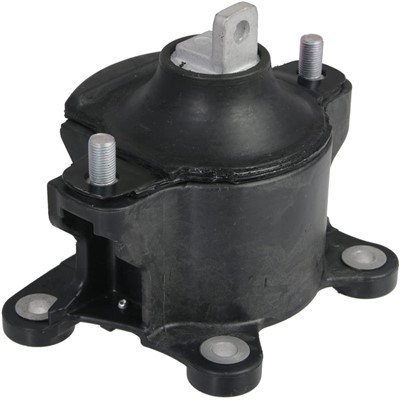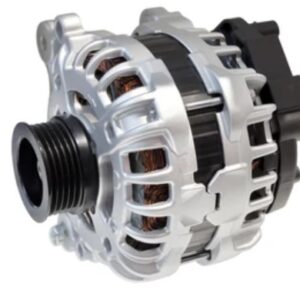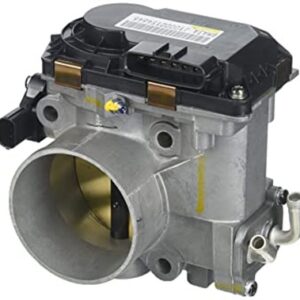Engine Mounts
An engine mount, also known as a motor mount or engine holder, plays a crucial role in securing an engine within machinery, while simultaneously mitigating shocks and vibrations during operation.
Crafted with precision, our engine mounts ensure optimal performance and durability for a wide range of applications.
The benefits of employing our high-quality, rubber mounts are evident:
- Vibration and Noise Reduction: Our engine mounts effectively minimize excess engine vibrations and noise, enhancing the overall operational experience.
- Engine Protection: By preventing excessive vibrations, our mounts safeguard engines from potential damage, ensuring longevity and reliability.
- Extended Lifespan: The robust construction of our mounts contributes to the prolonged lifespan of both the engine and connected sensor components, minimizing the need for frequent replacements.
- Transmission Protection: These mounts serve as a protective barrier, preventing damage to vital parts such as the transmission, thereby optimizing the overall functionality of your machinery.
Choose our premium engine mounts for a reliable and efficient solution that transcends brand distinctions, delivering unparalleled performance across various applications.
$80.00
CompareEngine Mounts
Engine mounts are crucial components that connect the engine to a vehicle’s chassis or frame. Their primary function is to hold the engine securely in place, absorb and isolate vibrations, and reduce the transmission of noise from the engine to the cabin. Engine mounts play a vital role in maintaining the overall stability, comfort, and performance of the vehicle.
Material and Construction
Engine mounts are constructed from materials designed to provide durability, flexibility, and resistance to wear and tear:
- Rubber: The core of most is made from rubber, which is used to absorb vibrations and reduce noise. Rubber offers the necessary elasticity to cushion the engine’s movements and absorb shocks from the road.
- Steel or Aluminum: The outer shell or bracket of is typically made from steel or aluminum. These materials provide the strength and rigidity needed to hold the engine securely in place and withstand the forces exerted during driving.
- Polyurethane: In high-performance vehicles, some use polyurethane instead of rubber. Polyurethane offers greater stiffness and durability, making it suitable for engines that produce higher power and torque.
Design and Functionality
Engine mounts are designed with several key features to ensure their effectiveness in securing the engine and enhancing vehicle performance:
- Vibration Damping: primarily designed to dampen vibrations from the engine. By absorbing vibrations, the mounts prevent them from being transmitted to the vehicle’s chassis and cabin, enhancing comfort and reducing noise.
- Engine Stability: The mounts hold the engine firmly in place, preventing excessive movement during acceleration, braking, and cornering. This stability is crucial for maintaining proper alignment of the engine and drivetrain components.
- Shock Absorption: helps absorb shocks and impacts from the road surface, protecting the engine and transmission from damage. This function is especially important when driving over rough terrain or encountering potholes.
- Flexibility: While are designed to be rigid enough to hold the engine in place, they also provide a degree of flexibility to accommodate engine movements due to torque reactions and thermal expansion.
Types of Engine Mounts
There are several types of engine mounts used in different vehicles, each with specific designs and purposes:
- Conventional Rubber Engine Mounts: These are the most common type, featuring a rubber core encased in metal brackets. They offer a good balance of vibration isolation and engine stability.
- Hydraulic Engine Mounts: Hydraulic mounts contain a fluid-filled chamber that provides additional damping capabilities. These mounts offer superior vibration isolation and are commonly used in luxury and high-performance vehicles.
- Active Engine Mounts: Active mounts are electronically controlled and can adjust their stiffness in response to engine conditions. These mounts provide optimal vibration control and noise reduction, adapting to different driving scenarios.
- Solid Engine Mounts: Used primarily in high-performance or racing vehicles, solid mounts are made from metal and do not contain rubber or fluid. They provide maximum engine stability but offer little vibration isolation, making them less suitable for regular street use.
Performance and Benefits
Engine mounts significantly impact vehicle performance, comfort, and longevity:
- Improved Ride Comfort: By isolating vibrations and reducing noise transmission, contribute to a smoother and more comfortable ride for passengers.
- Enhanced Engine Stability: Secure engine mounting ensures that the engine remains properly aligned with the drivetrain, preventing misalignment and reducing wear on engine and transmission components.
- Protection from Engine Movement: prevent excessive engine movement, protecting against potential damage to hoses, wires, and other components attached to the engine.
- Extended Component Life: By absorbing shocks and reducing vibrations, engine mounts help extend the lifespan of the engine, transmission, and other related components.
Maintenance and Care
Proper maintenance and care of engine mounts are essential for maintaining vehicle performance and preventing potential issues:
- Regular Inspection: Periodically inspect for signs of wear, cracks, or damage. Look for excessive engine movement, unusual noises, or increased vibrations, which may indicate worn or failing mounts.
- Address Symptoms Promptly: If you notice symptoms such as increased engine vibrations, clunking noises during acceleration or braking, or misalignment of the engine, have the engine mounts checked by a professional mechanic.
- Replacement: are subject to wear over time and may need to be replaced. Follow the manufacturer’s recommendations for replacement intervals, and use high-quality, OEM (Original Equipment Manufacturer) parts for replacements.
- Professional Installation: replacement requires specialized tools and knowledge. Ensure that replacements are performed by a qualified technician to maintain proper alignment and secure installation.
Advanced Features and Technologies
Modern engine mounts may incorporate advanced features to enhance their performance:
- Electronically Controlled Mounts: Some vehicles use mounts that can be electronically adjusted to provide varying levels of damping based on driving conditions. These mounts offer enhanced comfort and performance.
- Fluid-Filled Chambers: Hydraulic mounts with fluid-filled chambers provide superior vibration isolation and damping characteristics compared to conventional rubber mounts.
- Integrated Sensors: Advanced may include sensors that monitor engine vibrations and movement, providing data to the vehicle’s electronic control unit (ECU) for real-time adjustments.
Conclusion
Engine mounts are essential components that provide support, stability, and vibration isolation for a vehicle’s engine. By understanding the construction, functionality, and maintenance needs of engine mounts, drivers can ensure their vehicle’s engine operates smoothly and efficiently. Proper care and timely replacement of engine mounts help maintain vehicle performance, ride comfort, and the longevity of critical engine and drivetrain components.









There are no reviews yet.